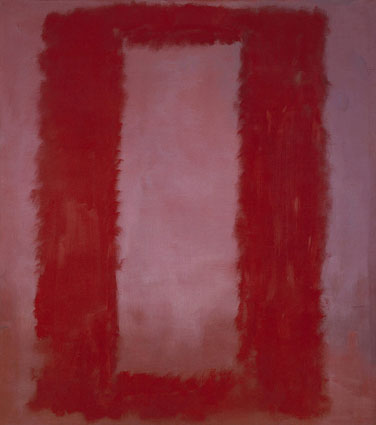The Seagram Building was to be the epitome of style, grace and modernity in New York in the late 1950s. Inside Mies van der Rohe’s great glass tower, everything had to be the best of the best. The finest travertine marble, the most perfectly brushed stainless steel, the most achingly understated furniture – all these could be sourced, albeit at a cost. But when architects Philip Johnson and Phyllis Lambert, herself an heiress to the Seagram fortune, were entrusted with the design of the new Four Seasons Restaurant on the ground floor, they had a dilemma. Which modern painter should they approach to paint the decorations?
They consulted Alfred Barr, Director of the Museum of Modern Art and principal arbiter of taste in New York at the time. It was 1958, the same year in which Mark Rothko had been selected to represent America at the Venice Biennale with a series of broodingly monumental paintings – pictures which, with their tripartite fields of dark and vibrant reds and blacks, had spurred critics to coin the new term “abstract sublime”. Rothko was Barr’s unequivocal choice. Johnson and Lambert approached the artist, who immediately agreed to furnish the required paintings. So began the most famously misconceived commission in the history of modern American painting – which is now the subject of a subtle, poignant and deeply moving new exhibition at Tate Modern.
Mark Rothko, who had been born in Dvinsk, Russia, in 1903, was an agnostic Jewish immigrant American who yearned to invest the language of what had become known as Abstract Expressionism with the spiritual power of the greatest religious art of old Catholic Europe. He believed that pure colour, laid on to the canvas in translucent layers and fields, could be used to express “basic human emotions – tragedy, ecstasy,...
They consulted Alfred Barr, Director of the Museum of Modern Art and principal arbiter of taste in New York at the time. It was 1958, the same year in which Mark Rothko had been selected to represent America at the Venice Biennale with a series of broodingly monumental paintings – pictures which, with their tripartite fields of dark and vibrant reds and blacks, had spurred critics to coin the new term “abstract sublime”. Rothko was Barr’s unequivocal choice. Johnson and Lambert approached the artist, who immediately agreed to furnish the required paintings. So began the most famously misconceived commission in the history of modern American painting – which is now the subject of a subtle, poignant and deeply moving new exhibition at Tate Modern.
Mark Rothko, who had been born in Dvinsk, Russia, in 1903, was an agnostic Jewish immigrant American who yearned to invest the language of what had become known as Abstract Expressionism with the spiritual power of the greatest religious art of old Catholic Europe. He believed that pure colour, laid on to the canvas in translucent layers and fields, could be used to express “basic human emotions – tragedy, ecstasy,...


